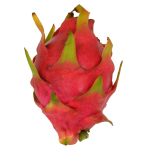
Selenicereus undatus, commonly known as Pitahaya or Dragon Fruit, is an epiphytic cactus from the family Cactaceae, native to Central America. It has become an important agricultural crop due to its unique fruit and adaptability to diverse climates.
| Kingdom | Viridiplantae |
|---|---|
| Phylum | Streptophyta |
| Class | Magnoliopsida |
| Order | Caryophyllales |
| Family | Cactaceae |
| Genus | Selenicereus (A.Berger) Britton & Rose |
| Species | Selenicereus undatus (Haw.) D.R.Hunt |